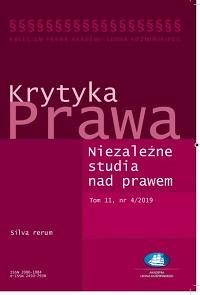Konstrukcja culpa in contrahendo jako instrument ochrony interesów inwestorów zagranicznych – wybrane zagadnienia
Mateusz Podhalicz
Uniwersytet Łódzki
12/2021 13 (4) Krytyka Prawa. Niezależne Studia nad Prawem
DOI 10.7206/kp.2080-1084.503








